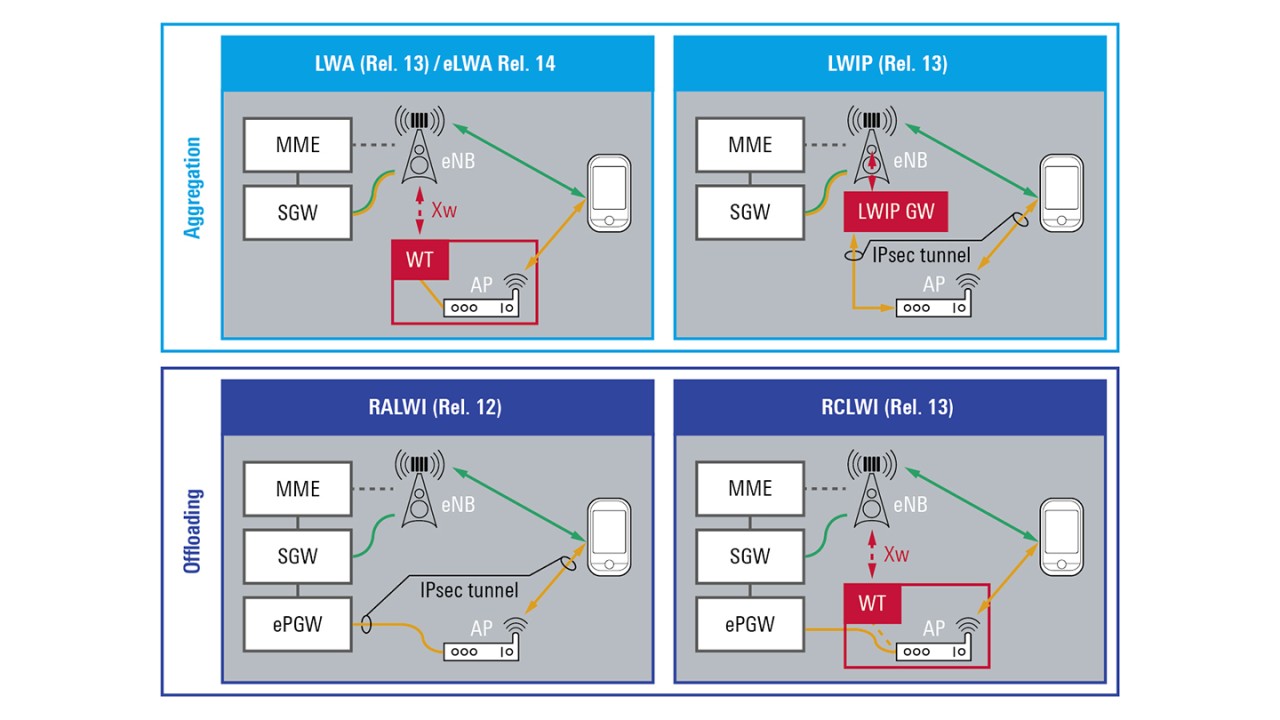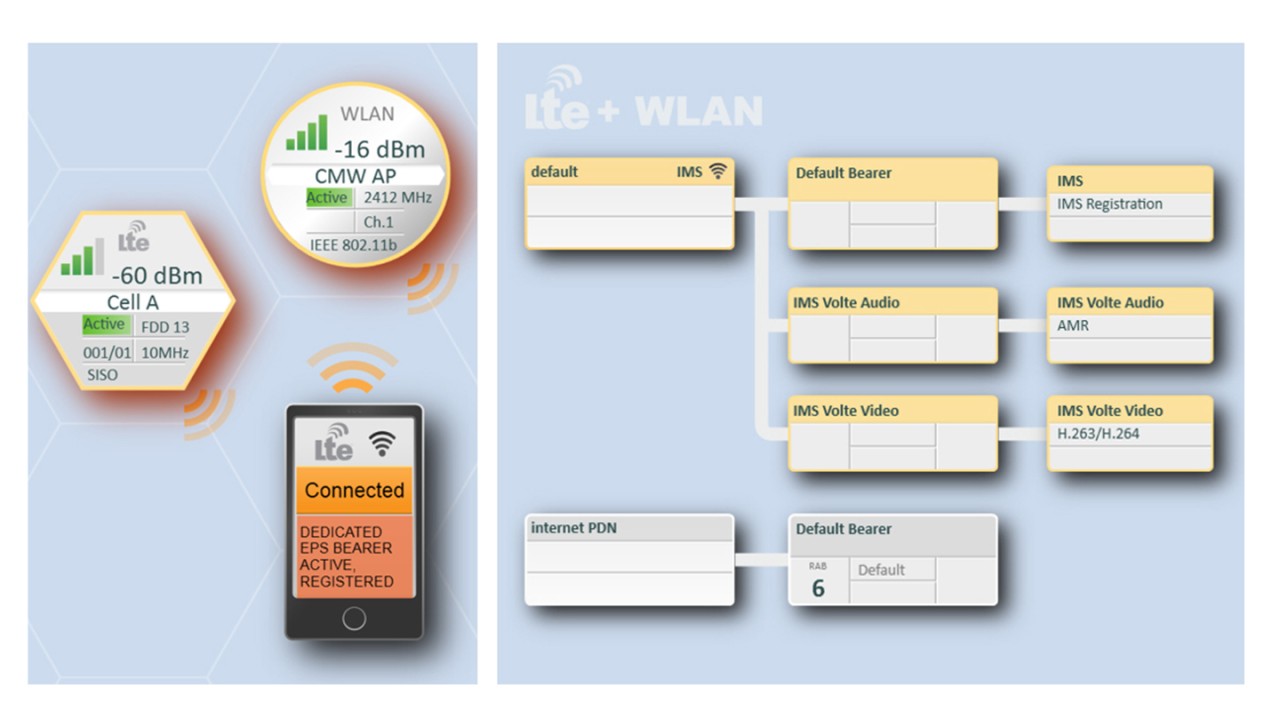Mobile customers' ever increasing traffic demands, especially indoors and in dense signal environments, have motivated operators to integrate WLAN capacity to offload traffic. To address this need, 3GPP has been working since Rel. 8 on the smooth integration of WLAN into the mobile network architecture. This was initially with loose interworking between the two radio access technologies (RAT). Starting in Rel. 13, however, interworking could be specified at RAN level, allowing simultaneous access via WLAN and LTE. Besides the related network infrastructure features, this functionality requires specific capabilites on the mobile device that needs to be tested in R&D and conformance labs.
WLAN traffic offload in LTE
Rohde & Schwarz offers unique solutions to test the different LTE-WLAN interworking features for the entire communications stack.




WLAN integration into the LTE network
Tight LTE-WLAN integration
Mobile operators have now a couple of possibilities for integration of WLAN into the LTE network: LTE-WLAN aggregation (LWA) using dual connectivity and LTE-WLAN radio level integration with IPsec tunnel (LWIP), where the user and control plane are handled by the eNB. For LWA, the WLAN function could be fully eNB integrated or separated using a new Xw interface. RAN assisted interworking (RALWI) and RAN controlled interworking (RCLWI) are both based on the original WLAN offloading schemes, such as RALWI defined in Rel. 8. The eNB has a specific functionality for controlling the WLAN access, but the user planes are separated. Consequently, different functionalities are required on the mobile device for network discovery, network selection, handover, etc.


Smart network emulation with R&S CMWcards
Comprehensive protocol and end-to-end testing
Testing for smooth LTE-WLAN interworking requires a test setup that allows simultaneous WLAN and LTE access as well as the support for the related interworking functionalities such as ePDG or IMS for VoWLAN services. Ideally, these functions are integrated into a single test instrument with the ability to inspect the protocol layers in detail, but also the possibility to run scenarios such as handovers as well as end-to-end performance and security testing. It is also important to test the very often underestimated impact of in-device interference caused by WLAN and LTE operating simultaneously.
Benefits of Rohde & Schwarz solutions
- Complete set of solutions covering tests for all major aspects of LTE-WLAN integration
- Test solutions for every purpose – from R&D to production and certification
- One-box solution for testing WLAN and LTE together in a simple, easy-to-use setup







